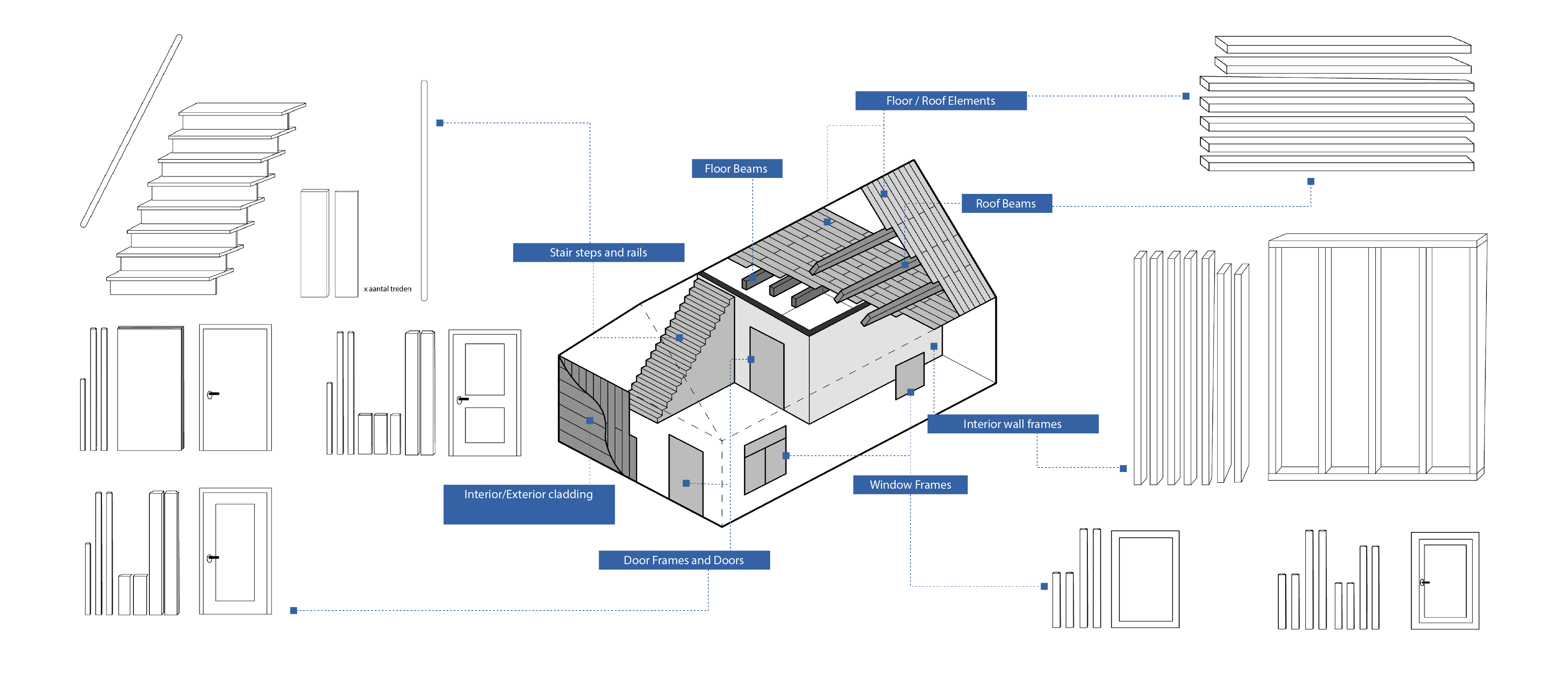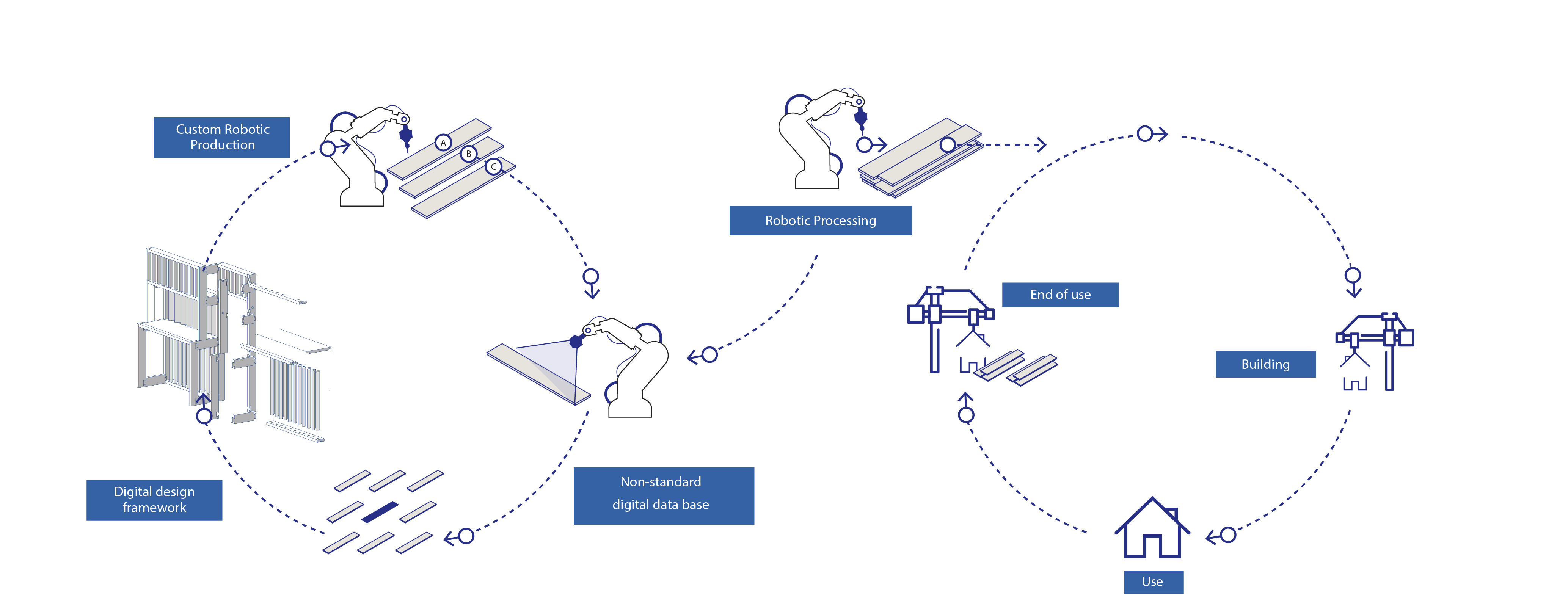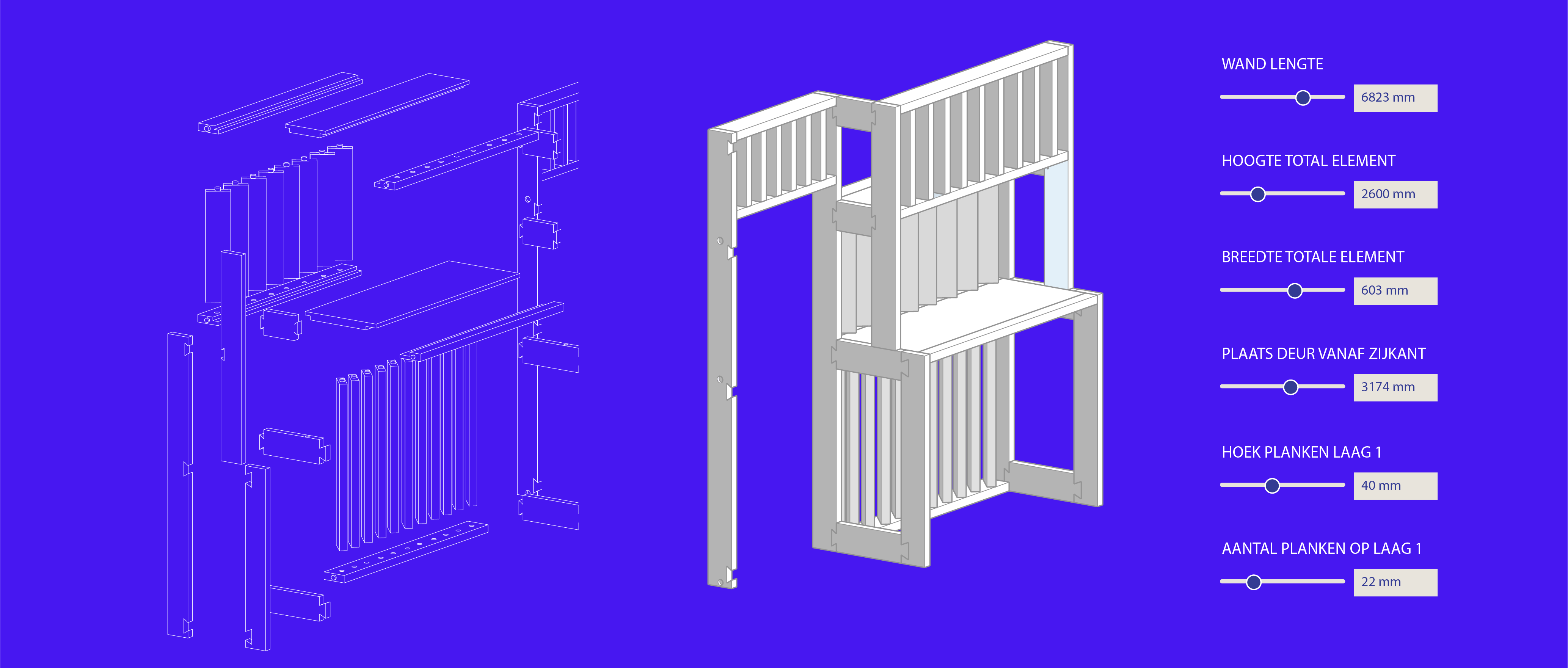7. Windows of Opportunity
“Which strategies can housing corporations apply to reuse wood waste from their own buildings, in order to create beneficial circular applications? And what can city authorities do to encourage and help increase wood reuse, in their transition towards a fully circular economy?” To answer these questions, individual interviews were held with all project partners. The findings from these interviews were synthesized into the following critical recommendations.
1. Create awareness
Raw materials are not enough for all housing demands: it is essential to create awareness on circular wood coming available from housing corporation assets. They are currently losing valuable materials.


2. Build a database
Start building a database of materials stored in your buildings. It is money for the future. Use common protocols for surveying current assets and material passports for all new constructions.
3. Survey your buildings
Explore digital technologies to survey buildings before renovation or demolition. This inspection can help implement sustainable solutions (like repair instead of replacement) or provide data on future available circular wood.


4. Organize collaboration
Organize collaboration between corporations, their co-makers and other parties in the value chain, so that there is sufficient circular wood for applications, and its processing costs can be collectively supported.
5. Create
pilotprojects
Create big pilot projects, involving several buildings and even various corporations. Test a shared material bank and applications with sufficient scale for digital production to be a real game changer.


6. Inform and engage citizens
Use pilots to take a front-runner role, informing and engaging citizens about circularity and sustainability in their direct environment. This contribution can help negotiate more flexible regulations for circular applications.
7. Explore alternative business models
Explore alternative business models, based on circular values and financial opportunities connected to circular wood. Start shifting from ‘paying for wood to be removed’ to ‘monetizing wood that is available’.


8. Automate wood processing
Invest in automation for circular wood processing, and apply digital design and production processes. It will pay out, given the increase of virgin wood prices and shortage of skilled workers.
9. Use parametric design systems
Use computational design systems which are adjustable to available wood, and various building typologies. Even if material input and dimensions of products slightly change, design/production costs can remain almost unaffected.

10. Investigate certification schemes
Explore the gaps and limitations of current certification schemes for ‘new’ vs. ‘circular’ building components. Which requirements -related to material quality, safety and durability- can be met by circular wood?


